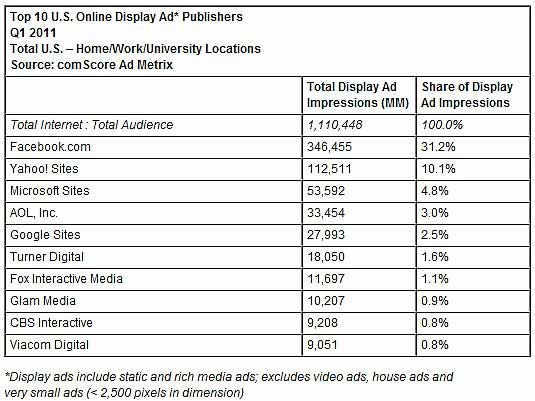 Part 2 of a 3-Part Guest Series by Susan Gunelius. Read Part 1, Part 2 and Part 3.
Part 2 of a 3-Part Guest Series by Susan Gunelius. Read Part 1, Part 2 and Part 3.
Content marketing and social media marketing are hotter than ever, but with so many tools, tricks, and so-called experts telling you different things you have to be doing to be successful on the social web, you can end up feeling overwhelmed with no idea where to begin or what to do next.
Relax. Take a deep breath and remember that content marketing and social media marketing are exactly what they claim to be -- forms of marketing, and the underlying theories of marketing still apply.
Therefore, your content marketing and social media marketing efforts need to be based in the fundamental principles of marketing theory to be successful over the long-term. Before you create a Twitter account, add yourself to Facebook, or start a blog, you need to set yourself up for content and social media marketing success by understanding the most basic secrets to content marketing success, which are rooted in integrated marketing and cross-promotional theories. The first of those secrets is the importance of creating a core branded online destination.
As you participate in the social web conversation, publish content, and share information, you’ll do so on a wide variety of websites, blogs, social networks, forums, and so on. In order to make those various efforts a valuable part of your content and social media marketing plans, all roads must lead back to what I call your
core branded online destination as mentioned in step 9 of my previous article published on ADMAVEN, “
10 Tips to Develop a Content and Social Media Marketing Strategy.”
In other words, as you build your online reputation and develop relationships with people online, you should do so with the goal of bringing them back to your core branded online destination where they can get more of your amazing content and you can deepen your relationships with them. Never boldly demand that people come to your core branded online destination. Instead, quietly offer a link to your core branded destination or make a reference to your useful content, so your audience feels in control of your interactions. In time, your most engaged audience will follow you, tell their own connections about you, and share your amazing content, opening the doors for you to engage with even more people!
I always recommend a blog as the core branded online destination because of its flexibility in terms of the type of content you can publish as well as its search friendliness. Even if you don’t own an online business, blogging can help you as your core branded online destination because of one simple thing -- Google.
Think of it this way -- if you build a company website with 10 pages, that gives Google 10 entry points to find you, index your content, and deliver your site in keyword search results. Now, imagine that you add a blog to your website and publish a new post every day for a year. That gives you 365 more entry points for Google to index and deliver in search results. Now, imagine that you publish amazing content that people want to share with their own audiences (I call this shareworthy content). They write about your posts on their own blogs, tweet links to your posts, share them on LinkedIn, Facebook, StumbleUpon, Digg, and so on. Suddenly, your original 10 entry points have grown to hundreds or thousands simply because you did two things:
- You connected with your target audience across the social Web and made an effort to bring them back to your core branded online destination.
- You published amazing content that your audience wanted to share and talk about with their own followers.
You’d be crazy to pass up that kind of access to people!
Therefore, the first secret you need to follow in order to put yourself on the path for successful content and social media marketing is to set up your core branded online destination, start publishing amazing content there, and then, work to build relationships across the web and bring people back to your core branded online destination for further interactions, learning, and sharing.
Stay tuned for Part 3 of this series where you’ll learn the second biggest secret to getting started on a path to content and social media marketing success -- Surrounding Consumers with Branded Experiences -- coming next week on ADMAVEN.You can read more about creating a content and social media marketing strategy in Susan Gunelius' new book,
30-Minute Social Media Marketing, which is now available in book stores and online. ADMAVEN readers can follow the link to get a
free bonus chapter, which is available for download from McGraw-Hill.
Susan Gunelius spent over a decade directing marketing programs for some of the biggest companies in the world, and today, she is President and CEO of KeySplash Creative, Inc., a marketing communications company. You can follow Susan on the social Web on Twitter (@susangunelius), Facebook, or LinkedIn.
Nick Kinports (follow him on Twitter @ADMAVEN) has worked in the interactive technology world for over 15 years, and helps agencies and brands find and connect to digital audiences for profitable outcomes. Want to talk to him about how a complete digital communications program can help your agency or brand grow? Email him at nick@lonelybrand.com
 lonelybrand’s new white paper, "Mobile Applications: Driving quoting behavior in 2012" uses custom data to guide insurance marketing strategy in 2012. The digital strategists at lonelybrand take a close look at ten innovative examples of how the industry can use mobile to drive quoting behavior. The white paper also provides trend analysis and tips on how to get the maximum value out of mobile.
lonelybrand’s new white paper, "Mobile Applications: Driving quoting behavior in 2012" uses custom data to guide insurance marketing strategy in 2012. The digital strategists at lonelybrand take a close look at ten innovative examples of how the industry can use mobile to drive quoting behavior. The white paper also provides trend analysis and tips on how to get the maximum value out of mobile.
















